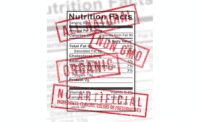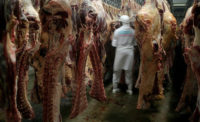The revised Listeria Guideline replaces previous versions of the Guideline and Q&As (last updated in 2006), and provides recommendations that establishments producing post-lethality RTE products can follow to meet the requirements of 9 C.F.R. Part 430 (the Listeria Rule). Although the revised guideline does not contain any major changes to previous recommendations, it has been reformatted and expanded to assist establishments in complying with the Listeria Rule. Key expansions include:
- A new appendix (Appendix 2.1) regarding validation of post-lethality treatments and antimicrobial agents;
- A detailed description of the type of escalated actions that establishments can take during intensified cleaning and sanitation following positive Listeria samples (pg. 2-48);
- A new appendix (Appendix 2.3) providing suggested employee training programs for implementing the Listeria rule;
- FSIS’ expectations for Listeria sample collection and laboratory analysis (pgs. 3-9 to 3-12); and
- Recommendations for identifying and addressing Listeria trends (pgs. 4-8 to 4-9).
FSIS also announces in the guideline that the agency intends to increase the number of product samples it takes under its routine Risk-based Lm (RLm) and intensified verification testing (IVT) programs from 3 to 5 samples per sampling unit and intends to composite the five 25g product samples, increasing the analytical test portion from 25g to 125g. As this will certainly increase the possibility of FSIS finding positive Lm product results, it is imperative that establishments now take the time to review the revised guideline carefully and reassess their Listeria control programs to ensure they are doing everything possible to detect, and eliminate, Listeria in their post-lethality environments.
Based on our experience, establishments should pay particular attention to two aspects of their Listeria control program. First, they should ensure that the frequency and amount of sampling in their post-lethality RTE environment is adequate to detect Listeria that may be present (even if this means surpassing the minimum recommendations in the guidelines). Establishments will be better off from a regulatory perspective if they find (and eliminate) Listeria before FSIS does.
Second, establishments need to ensure they have procedures in place to identify the potential root cause for each Listeria finding and take corrective and preventive actions based on the potential cause. Too many establishments simply “clean and sanitize” when Listeria positives are found without identifying a potential cause. Adequate preventive actions can only be taken when a cause is identified and eliminated.
Establishments should also follow the advice contained in the guideline for identifying and adequately addressing Listeria trends in their plants.








